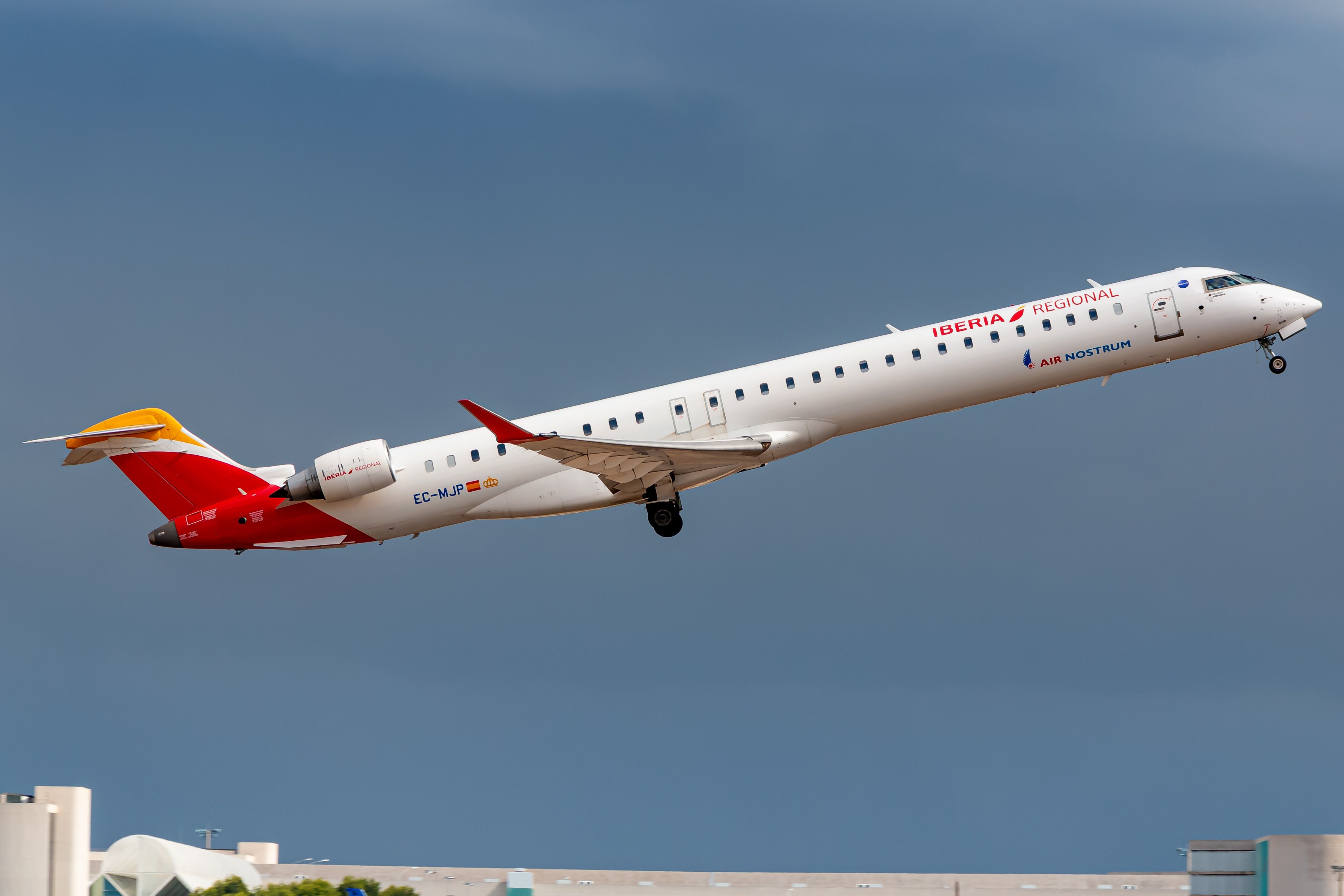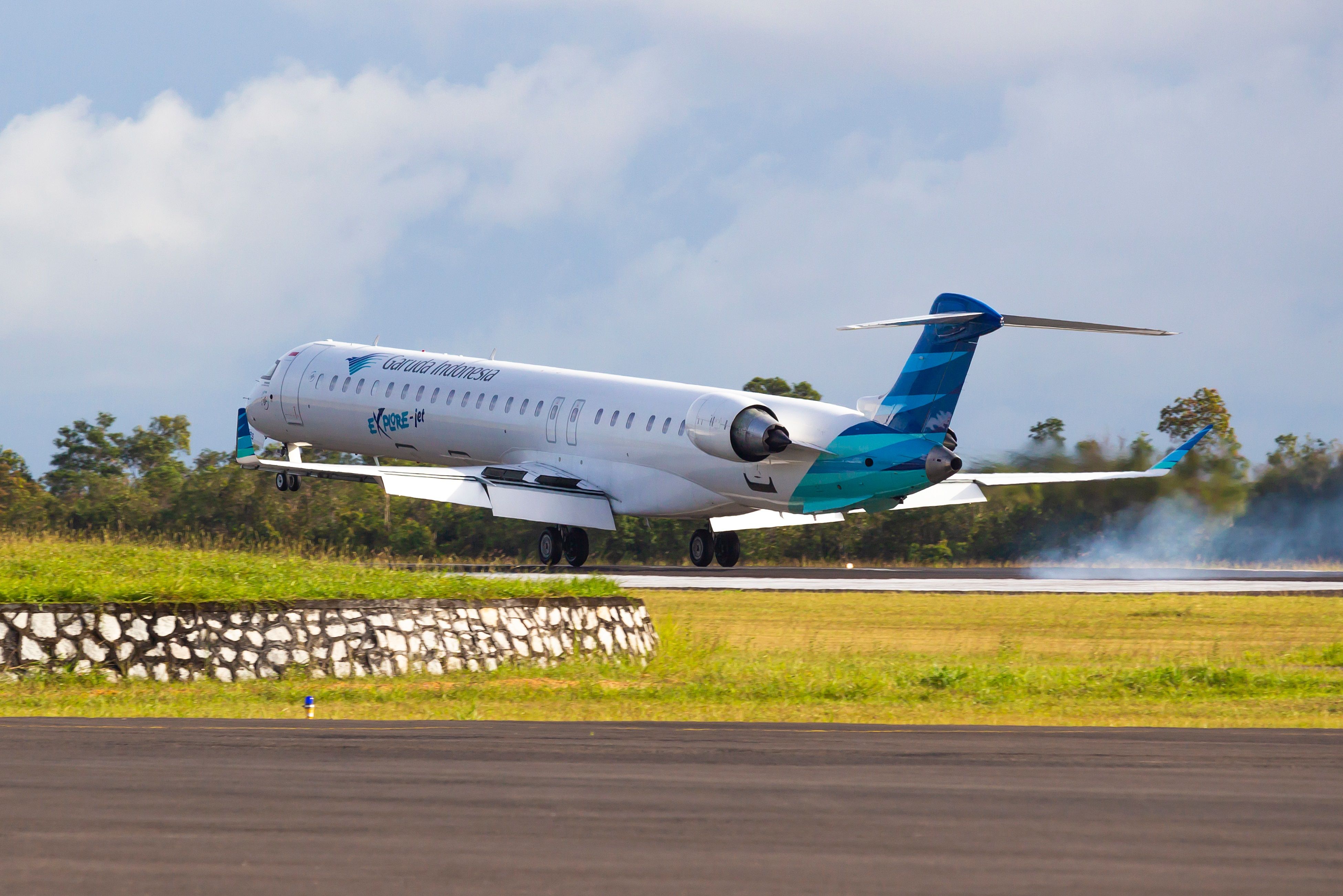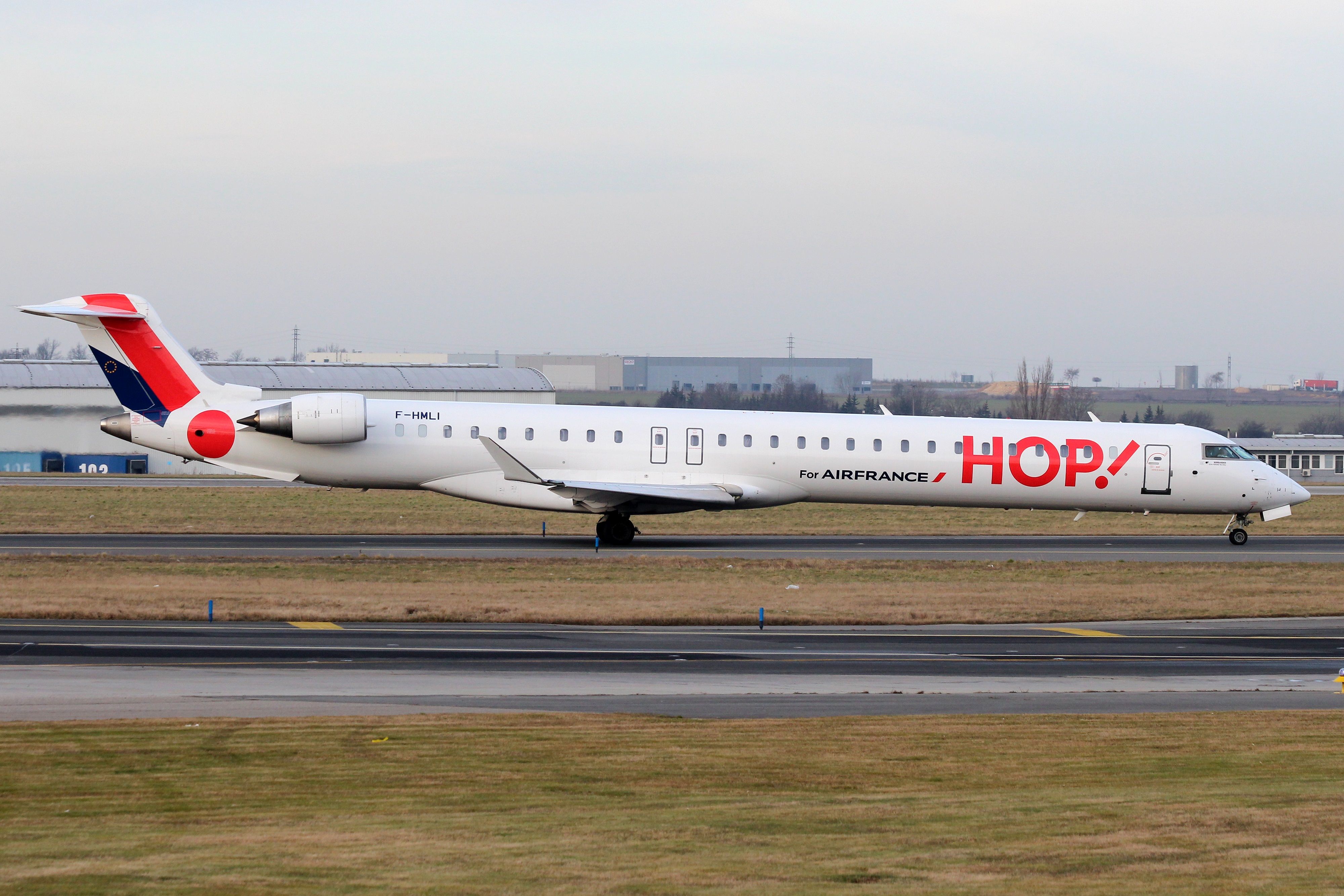The CRJ-1000 has never been popular. It is too big to comply with the US scope clause, so it never made it into US fleets, which is crucial for gaining scale. Some 65 CRJ-1000s were built, of which just 29 are active at the start of March. They are in operation with Air Nostrum and Hibernian Airlines (part of the Air Nostrum Group). Air France Hop ceased using the CRJ-1000 are the end of 2022, another nail in the coffin of the type.
Never a popular aircraft
For regional jets, the US scope clause is a crucial consideration. Limiting what aircraft and how many can operate for major carrier partners by size, weight, and the number of seats, it is part of labor contract negotiations.
The CRJ-1000 is too heavy and has too many seats to meet the scope requirements. In contrast, the smaller CRJ-700 and CRJ-900, along with the E175 and others, met the criteria. There are over 1,300 examples of these three in use in the US alone.
29 CRJ-1000s are active
According to ch-aviation.com, 29 CRJ-1000s are active, all operating to/from/within Europe. As shown below, they are used by just one scheduled airline and one ACMI/charter carrier. On February 24th, I flew an Air Nostrum CRJ-1000 (EC-MJQ) between Tangier and Madrid to return home from CONNECT Route Development Forum in Morocco.
- Air Nostrum (for Iberia Regional): 26 active, each with 100 all-economy seats (a 27th is stored)
- Hibernian Airlines: three active (presently operating for ITA), each with 100 all-economy seats (ex. Air Nostrum)
All others have been removed or are stored. For example, Air France Hop standardized and streamlined its fleet to consist only of the E170 and E190. This makes sense versus having another type of similar size. Garuda Indonesia retired its 18-strong CRJ-1000 fleet, while Arik Air's sole example hasn't been flown for a long time.
Stay aware: Sign up for my weekly new routes newsletter.
First flew 15 years ago
The development of the CRJ-1000 was announced in February 2007. The purpose was to offer a larger aircraft, with around 100 seats in an all-economy configuration, optimized for relatively short sectors where no belly cargo was needed. The first flight took off in September 2008.
The CRJ-1000 had the highest number of seats for Bombardier until the CSeries appeared half a decade later, not that the two aircraft were equivalent. The CS100, which became the A220-100, was designed for 108 to 135 seats but was typically meant for about 125. The aircraft was designed for much broader missions.
The CRJ-1000's unpopularity
Basic aircraft economics indicate that smaller aircraft have lower trip costs than larger aircraft but higher seat-mile costs. This is why RJs are best utilized in markets with higher fares (to generate higher seat-mile revenue), whether from niche or business-focused markets.
Despite the lack of sales, the CRJ-1000 is perceived as having relatively better economics than most RJs. For example, an airline using it could have a third more available seats (should they be required) versus the CRJ-900, counterbalanced by only having a 9% higher maximum takeoff weight (MTOW).
The CRJ-1000 has a similar number of seats to the A220-100 yet with about a 34% lower MTOW. Of course, fuel burn and available parts would be a different issue.
Have you flown the CRJ-1000? If so, share your experiences in the comments.




